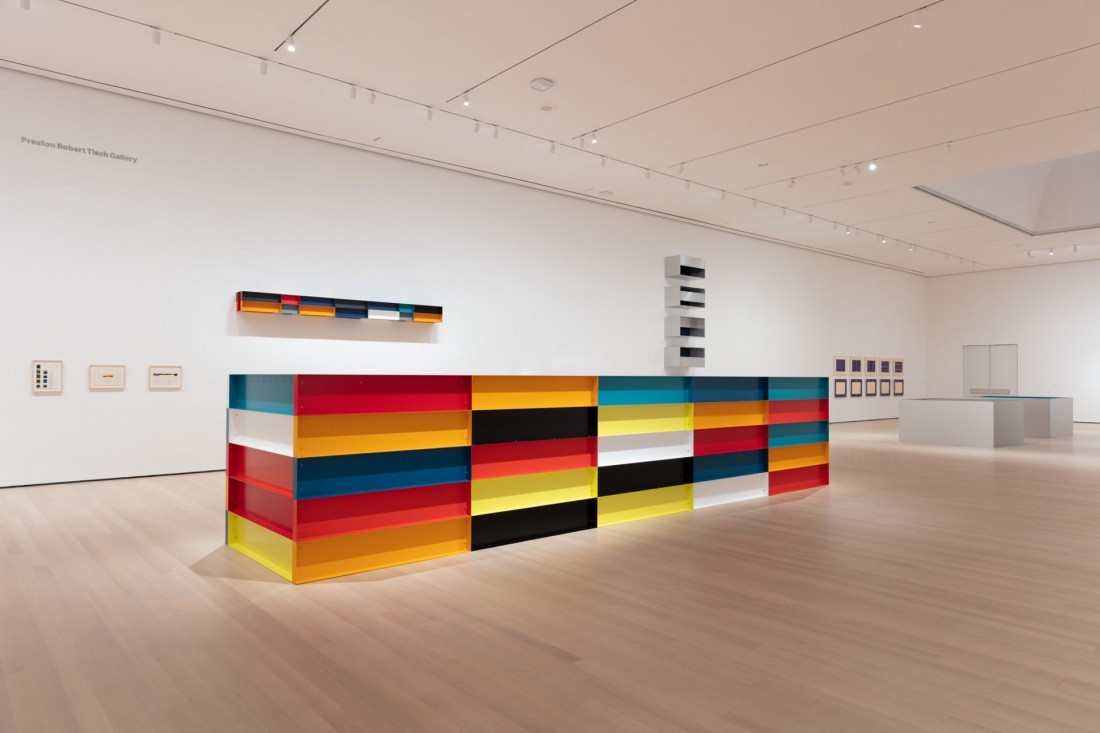Donald Judd
Donald Judd’s work is intense. His objects resonate with specific physical properties; specific objects that vibrate with spatial conviction. He elevates elements and transforms space into precious experiences, experiences that make you want more. His work commands solidity and emanates energy; Judd is addictive. Once you engage with one piece, you are inevitably left curious, seeking to understand and unpack his intention. His works embody specific geometric properties and objective facts: colour, form, surface and texture. They do not partake in illusion, depiction or representation. They are what they are: three-dimensionality existing in the third dimension. The specific objects present the truth in an abstract language purged of ambiguity. These forms and their properties are ends in themselves.

The significant retrospective of the work of Donald Judd at the MoMA comes at a tragic and dire time. This was our first museum experience where we were aware of COVID and our last museum visit because of COVID. In the moment we found the extreme absence of excess in Judd’s work oddly soothing. Unlike any other American artist, he is capable of making you feel almost incapable. This is accomplished through an immeasurable feat of tension. There is no privileged point of view or necessary amount of time required to make sense of the work, since the totality of each piece continuously presents itself. An entire piece can be understood from any vantage point. The work immediately reveals its acuity through a repetition of varying difference. Divorced from art historical lineage, these works exist in the present and are not defined as sculpture. Donald Judd does not make sculpture: he defines the geometry and its materialization, and outsources the technical aspects of craft and construction to others. Pedestals are discarded and the objects are placed on the floor or mounted on the wall. Ironically, in spite of this, he elevated the canon and practice of sculpture itself.
“In regard to both the color and material, these are things I consider primarily given, they already exist in the world, and I am interested in using them as they are in their nature, as they are” (all quotes are by Donald Judd). His materials—wood, Plexiglas, metal—are treated or painted. Neutered from any art historical lineage, the works do not reference precedents or an organic nature: “My work is just metal; Flavin’s is just fixtures; Chamberlain’s just junk; and so on.” The works exist outside a priori systems of thought; they exist in a space void of metaphysics and metaphor.
…to continue reading the article on Donald Judd, order a copy of Issue #155 here, or Subscribe today.

